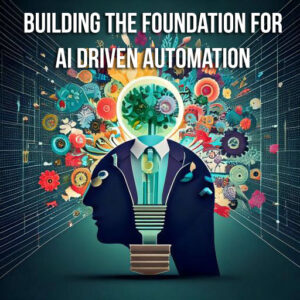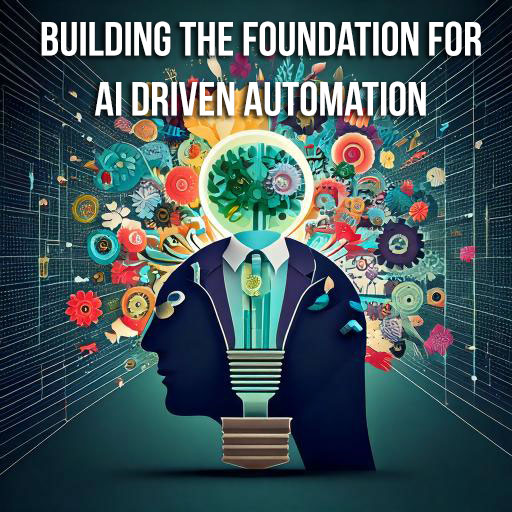 Building the Foundation for AIDA (AI-Driven Automation)
Building the Foundation for AIDA (AI-Driven Automation)
In the rush to implement artificial intelligence and automation, many organizations overlook the critical foundational elements that determine success or failure. This guide outlines the essential principles and technologies that must be in place before embarking on AI-driven automation initiatives and how Pantheon’s Odyssey AIDA platform can help.
1. Data Infrastructure Foundation
Data Architecture
- A robust data architecture that enables seamless data collection, storage, and retrieval.
- Modern data warehousing solutions that can handle both structured and unstructured data.
- Clear data governance policies and procedures.
- Established data quality monitoring systems.
- Pantheon’s Odyssey platform has integration capabilities, embedded workflow, rules engine and analytics capabilities providing governance and data quality monitoring.
Data Integration Capabilities
- Reliable ETL (Extract, Transform, Load) processes.
- API infrastructure for real-time data exchange.
- Unified data formats and standardization protocols.
- Connected data sources across relevant business systems.
- Out of the box, Odyssey has over 5,000 integration points covering 400+ products and databases, from mainframes to APIs, to webservices, and all known integration protocols, with a capability to quickly create new integration points as required.
Data Quality Framework
- Automated data validation processes.
- Data cleansing and standardization procedures.
- Clear data ownership and stewardship.
- Regular data quality audits and reporting.
- The Odyssey no-code platform with its built-in workflow, rules engine and reporting capabilities can automate data validation procedures and facilitate data quality audits and reporting.
2. Technical Infrastructure
Computing Resources
- Scalable computing infrastructure (cloud or on-premises).
- Sufficient processing power for model training and inference.
- Adequate storage capacity for large datasets.
- High-bandwidth networking capabilities.
- Odyssey AIDA can help with AI computing resources by providing a scalable and flexible infrastructure for AI workloads, allocating computing resources based on demand and ensuring optimal performance and cost-efficiency. Additionally, Odyssey AIDA supports integration with popular AI frameworks and tools, allowing seamless deployment and management of AI models.
Development Environment
- Version control systems for both code and models.
- Continuous Integration/Continuous Deployment (CI/CD) pipelines.
- Testing environments that mirror production.
- Model monitoring and logging systems.
- With its powerful workflow orchestration engine and integration capabilities, Odyssey AIDA enables seamless integration with various tools and technologies used in AI development and automation. It provides support for version control, automated testing, deployment to production environments, and monitoring and logging of AI models. Odyssey AIDA streamlines the development process, improves efficiency, and ensures the smooth operation of AI-driven automation applications.
Security Infrastructure
- Data encryption at rest and in transit.
- Access control and authentication systems.
- Audit trails for data access and model usage.
- Compliance monitoring tools.
- The Odyssey AIDA security infrastructure is built on a 10-layer security model that includes access controls, authentication and authorization, entitlements, data encryption (both at rest and in transit), security and compliance monitoring and more.
3. Organizational Readiness
Skills and Expertise
- Data science and machine learning expertise.
- Data engineering capabilities.
- DevOps knowledge for AI/ML operations.
- Business analysis skills for problem definition.
- The Odyssey AIDA platform provides a pluggable architecture, so it is easy to leverage your own AI models, Pantheon built models or publicly available algorithms. Additionally, Pantheon professional services can provide expert staff to facilitate or augment your existing resources as needed.
Process Maturity
- Documented business processes.
- Clear metrics for success.
- Change management procedures.
- Model governance framework.
4. Business Framework
Strategic Alignment
- Clear business objectives are tied to AI initiatives.
- Defined success metrics and KPIs.
- ROI measurement framework.
- Risk assessment methodology.
Operational Integration
- The Odyssey AIDA platform covers
- Automated workflow and business process management tools
- Integration points with existing systems
- Feedback loops for continuous improvement
5. Implementation Prerequisites
Data Pipeline Requirements
- Automated data collection processes.
- Real-time data processing capabilities.
- Data quality checking mechanisms.
- Feature engineering pipelines.
- The Odyssey AIDA platform provides a comprehensive set of tools and capabilities for data ingestion, transformation, and analysis. With its AI-driven automation capabilities, Odyssey AIDA can streamline the entire data pipeline process, from data collection to model training and deployment.
Model Management Infrastructure
- Model versioning system
- Model deployment framework
- Performance monitoring tools
- Model retraining protocols
- Odyssey AIDA can assist with AI model management by providing a comprehensive platform for developing, deploying, and managing AI models. With Odyssey AIDA, you can easily train and fine-tune AI models using various algorithms and techniques. The platform also offers features for data pre-processing, feature engineering, and model evaluation.
Production Environment
- Scalable inference infrastructure
- Error handling and failover systems
- Monitoring and alerting setup
- Disaster recovery procedures
- Odyssey ensures a scalable and reliable production environment through various measures including: scalability through load balancing of Odyssey servers and task agents; error handling mechanisms to detect, handle and alert appropriate personnel for quick resolution; monitoring key metrics and performance indicators to ensure optimal system performance; and an Active-Passive Disaster Recovery plan, ensuring business continuity in the event of a disaster.
Best Practices for Success
- Start with a solid data foundation before pursuing complex AI implementations
- Ensure technical infrastructure can scale with growing demands
- Invest in building internal capabilities and expertise
- Establish clear governance frameworks
- Create feedback mechanisms for continuous improvement
Common Pitfalls to Avoid
- Underestimating infrastructure requirements
- Neglecting data quality and governance
- Failing to align AI initiatives with business objectives
- Insufficient attention to security and compliance
- Inadequate monitoring and maintenance plans
Conclusion
Success in AI-driven automation requires more than just selecting the right algorithms or having access to data. Organizations must build a strong foundation across data infrastructure, technical capabilities, organizational readiness, and business frameworks. By ensuring these foundational elements are in place, organizations can significantly increase their chances of successful AI implementation and realize sustainable benefits from their automation initiatives.
By leveraging Pantheon’s expertise and the Odyssey platform’s flexibility, organizations can harness the power of AI to drive innovation and transform their business processes. Contact us to see it in action.


